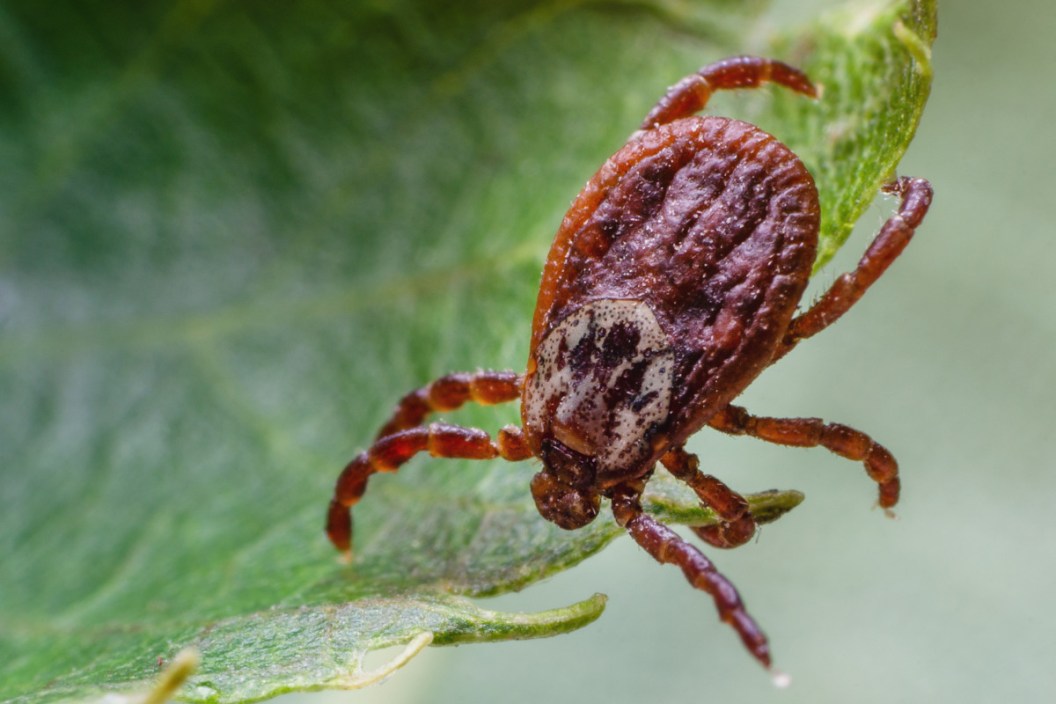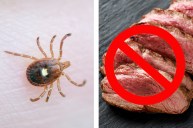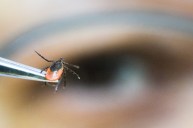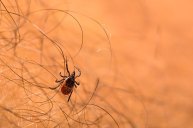Ticks. Just the word is enough to make some people's skin crawl. When you start factoring in the diseases and parasites they can spread, they become even creepier. These arachnids always make us a little hesitant to head off into the woods in the spring months. It doesn't help that there's a bevy of wild stories about what ticks can do on the internet. That got us wondering how much of the tick information out there is based in fact, and how much is pure fiction. We decided to ask an expert about it. "Tick Man Dan" Wolff, the creator of the "TickEase" removal tweezers and a unique tick bite kit, knows all about ticks. His kit is the only one of its kind that's CDC-approved, and he's become an expert in the many tick species found here in North America and he knows all about removal and prevention practices. To our surprise, he ended up shattering several long-standing common myths and other pieces of minor misinformation we've been hearing for years now.
Without further delay, here are the biggest tick myths that have been deemed untrue by a real tick expert.
1. Ticks are only active in summer.
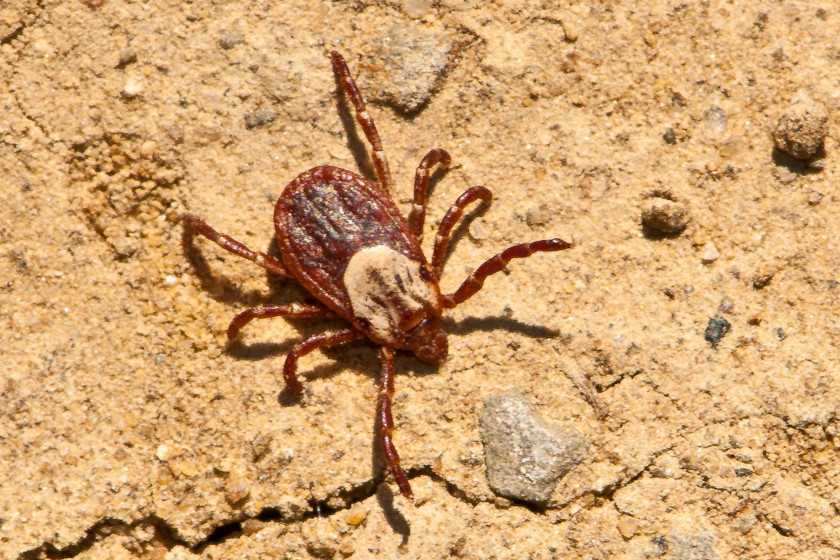
Wikimedia Commons: Jerry Kirkhart
Many people think they only need to worry about ticks during the summer months, but Wolff says this is simply not true. Ticks are active all year-round and if they're in a feeding mood, they won't hesitate to take a bite out of you. He said ticks are built well to survive the cold, even if it makes them inactive.
"We sometimes have periods of time where the temperatures are well below freezing," Wolff said. "What you'll find is the ticks go into this state called diapause where they'll kind of curl their legs. They'll look like they're dead, but they're just sort of in a suspended animation."
He also said ticks use a substance called glycerol as a form of natural anti-freeze during the cold months. In ticks with Lyme disease, the glycerol will also serve as a food source for Lyme bacteria in a disgusting (and dangerous) symbiotic relationship. Wolff said the highest concentration of ticks he ever saw happened in February in Massachusetts, when cold temperatures suddenly waned and a two- or three-day stretch of warmer ones brought them out in droves.
2. Ticks can jump on you.
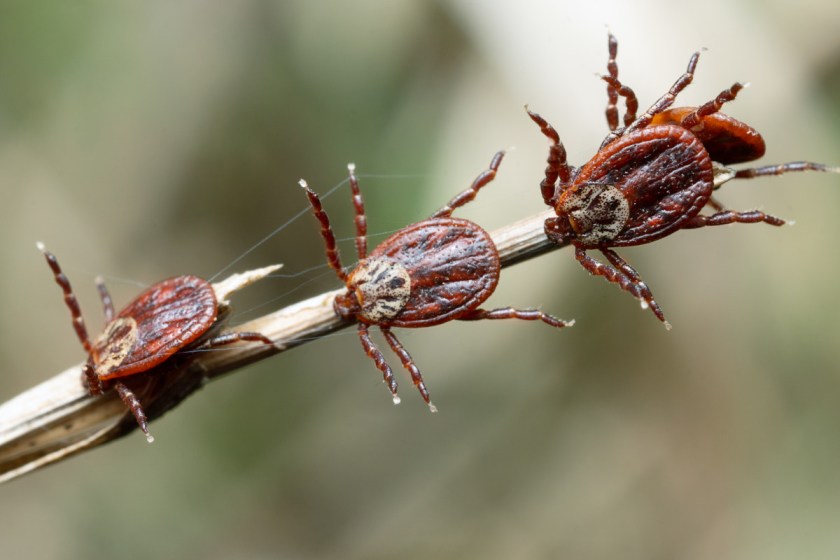
Getty Images: Dzurag
Another common tick myth is that they can jump to get on you. Wolff says this is simply not true and they are not built for jumping. Instead, most tick species anticipate their victims in fields or wooded areas. It's a waiting game where eventually they hope to latch onto a victim that passes by in a behavior known among experts as "questing."
"Deer ticks don't have many good sensory organs, so their strategy is to climb up on top of a leaf or a blade of grass and stick out their arms," Wolff said. "There's a little tip to the arm that's really sticky like Velcro, and they wave. Anything that brushes by, they stick to it like that."
Although he notes that some species, like the Lone Star tick, will actively seek out a body and start crawling in a victim's direction once they sense it. However, if they get on you, it's because they climbed there and not because of some mighty leap.
"They're not physically capable of jumping or flying," Wolff said.
3. Ticks can smell your blood.
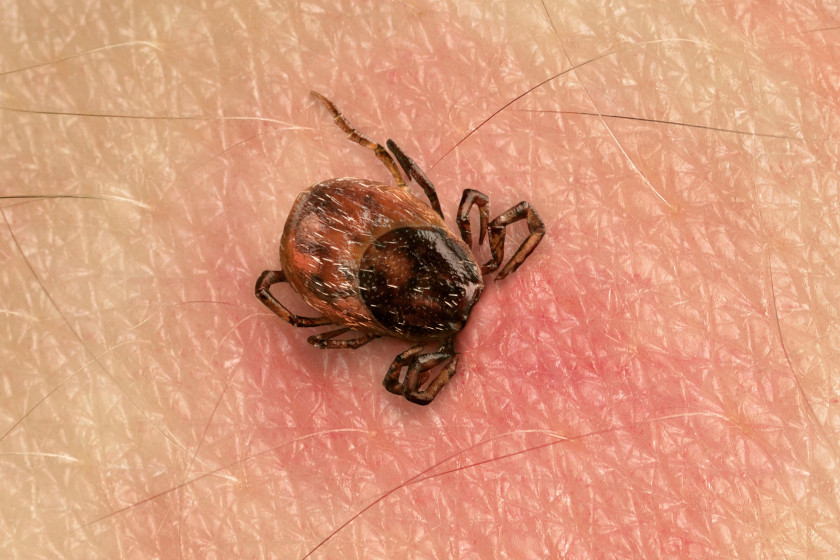
Getty Images: Smileus
Wolff says some tick species have more advanced sensory organs than others. Since the deer tick is relying on a victim walking past and hitching a ride, it doesn't need great sensory organs, and that's how many ticks prefer to hunt. If you avoid grassy areas and the damp leaf litter most ticks prefer, you should be fine. However, species like the Lone Star have a creepy way of detecting and seeking their food sources.
"The Lone Star ticks will detect your breath signature, like the carbon dioxide, and they can maybe see a little bit or detect vibration and they'll come running at you as fast as they can," Wolff said.
Even though mosquitoes have recently been shown to respond to certain colors, Wolff doesn't believe the color of what you're wearing will have any effect on ticks targeting you. He did note that it's going to be easier to detect ticks on lighter-colored clothing after you leave the woods.
4. Burning off an embedded tick is a good idea.
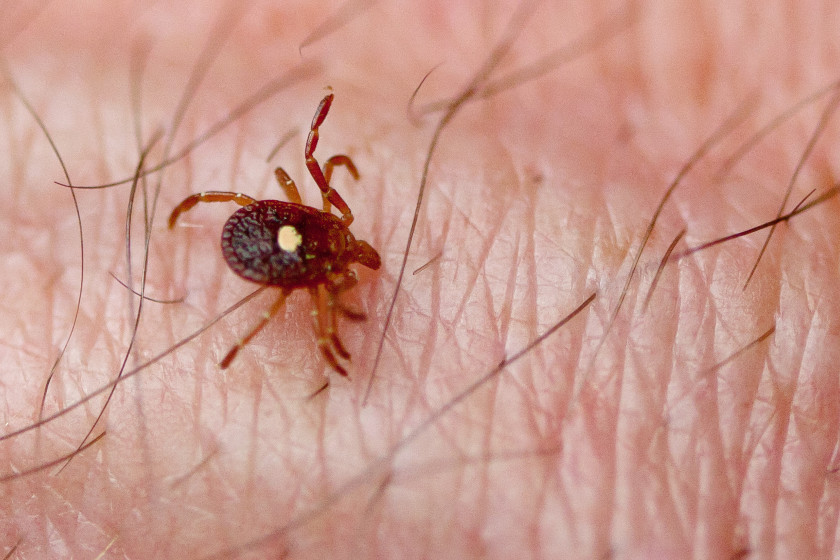
Getty Images: epantha
At some point it got ingrained into popular culture that the best way to deal with an embedded tick was to burn it off, or to douse it Vaseline and wait for it to fall off. It turns out that may be the worst possible thing you can do with any embedded tick.
"Don't take a lit cigarette and put it near the tick's butt, or a hot match, or anything related to heat," Wolff said.
That's because there's a real possibility of agitating the tick and having it spit up the contents of its stomach back into your body. That could include things like Lyme, Powassan disease, babesiosis, or other bacteria and parasites. Wolff says the best way to remove any tick is to take it out in one motion using a pair of tweezers.
Specifically, you're supposed to brush the rear end of the tick up slightly and come in from the side with your tweezers. Then grasp the tick low and close to the skin, and pull straight out. Wolff says this method will take the tick and mouth parts out cleanly nine times out of ten.
5. Ticks drop on you from trees.

Getty Images: Ladislav Kubes
For this one, Wolff notes that some ticks may end up in trees after feeding on birds, but that's about the only time a tick will be found up that high. Most of their hunting is done at a much lower level unless their victim takes them somewhere they're not supposed to be.
"Ticks don't drop from the trees, and they don't fly. The highest a tick will wait for you is about waist high or what I call 'deer high,' and that's only in their adult stages," Wolff said. "The younger the tick the lower it waits, because it's getting on smaller hosts."
Wolff also mentioned that if you find a tick on your head or neck area, it's likely that tick first crawled onto your legs before crawling all the way up your body to that area.
6. You can't get sick if you remove a tick immediately.
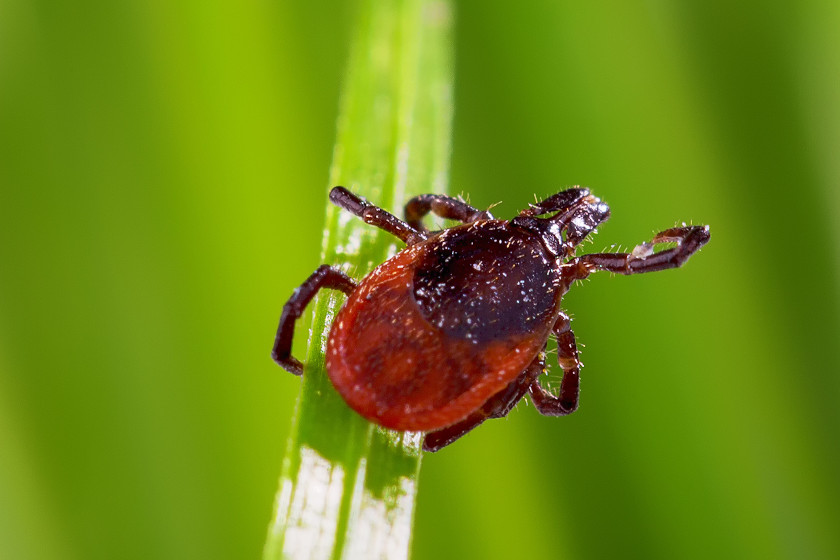
Getty Images: Dieter Meyrl
This one is a biggie. Wolff has heard from people who think that if you get a tick out quickly, it cannot transmit a disease or parasite. He has a major warning in response.
"Never think that way, because there's 15 illnesses you can get from one tick bite, conceivably. And [there are also] viruses, bacteria, and parasites. They all have different transmission times," he said. "So, yeah, you could be safe from Lyme, but you could get anaplasmosis, or babesiosis, or Powassan virus, which is transmitted in minutes."
On the flip side, he notes that an embedded tick is also not necessarily an immediate cause for concern, even if the tick is infected. This is because diseases and parasites don't always pass to a victim through the tick's saliva. Wolff did say it's worth monitoring for flu-like symptoms, chills, nausea, and other signs for a month or more after a tick bite.
"Just because a tick has tested positive for something doesn't mean that it's transmitted it to you," Wolff said. "Even if it's fed for a long time, it's not a given. But it does help with treatment options if indeed you do start to develop symptoms, because with most of these illnesses the onset is very similar."
7. Ticks can live without a head.
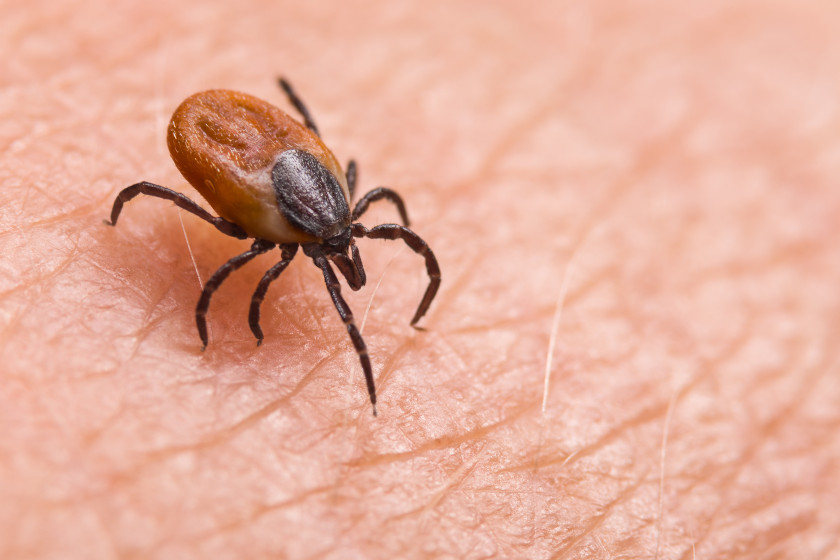
Getty Images: Ladisla Kube
One of the more common myths about ticks is that they can live without their head. It's anyone's guess where this myth originated, but it's one Wolff has heard many times in the past.
"Some people think if you break a tick's head or mouth parts it's going to grow back. That's impossible," Wolff said.
Without their mouth parts, the tick cannot feed any longer and it will eventually die. While it's preferable to pull a tick out whole in one pull, Wolff said it's not necessarily something to be concerned about if you break one off in yourself or a pet.
"Even if you do break it off, it's not as big of a deal as many people think or have thought because once the body of this tick is removed, you're at no further risk of exposure," Wolff said. "Meaning, you've already been exposed as much as you're possibly going to be when you remove the body of that tick off, so that mouth part in there, that would just be like a little splinter."
He said you can either let the tick's head work itself out of the skin or remove it using a pair of tweezers just like you did with the body.
8. You can feel a tick bite.
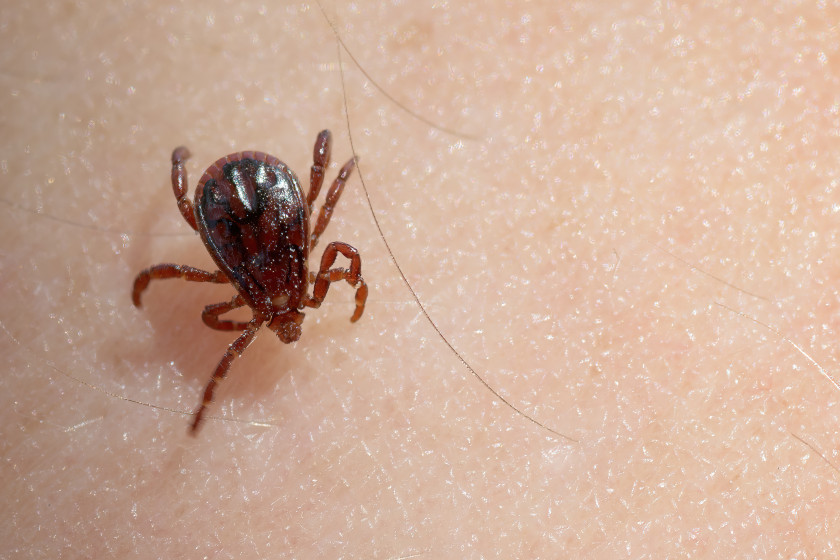
Getty Images: RobertAx
It turns out, many people may contract Lyme and other diseases without ever knowing they've been bitten. However, it the stealthy bite is part of the tick's mode of attack, and they have evolved to develop some rather disgusting tools that help them do it.
"You can't [feel a bite]. Their saliva has a real complex chemical makeup. They actually start spitting as they are getting ready to bite and that spit contains a painkiller or a numbing agent that allows them to bite undetected," Wolff said. "Subsequently, they have an anti-microbial [feature] which helps to keep it from becoming infected while it's biting you, and also [has] anti-coagulant that keeps the blood flowing and keeps it from getting a scab on it. So, it can continue to suck while it's feeding."
If you've ever found a tick embedded in you and wondered why you never felt it, that's why. It was the pain-numbing tick spit.
The myths about these pests (and the actual truths) are great to keep in mind as we get into the heart of tick season and Lyme disease awareness month. After speaking with Tick Man Dan, I would highly suggest you check out the TickEase website for more information on their tick removal products. He knows what he's talking about, taught me a lot, and is doing some good work in the arena of tick-borne disease prevention.
For more outdoor content from Travis Smola, be sure to follow him on Twitter and Instagram For original videos, check out his Geocaching and Outdoors with Travis YouTube channels.
